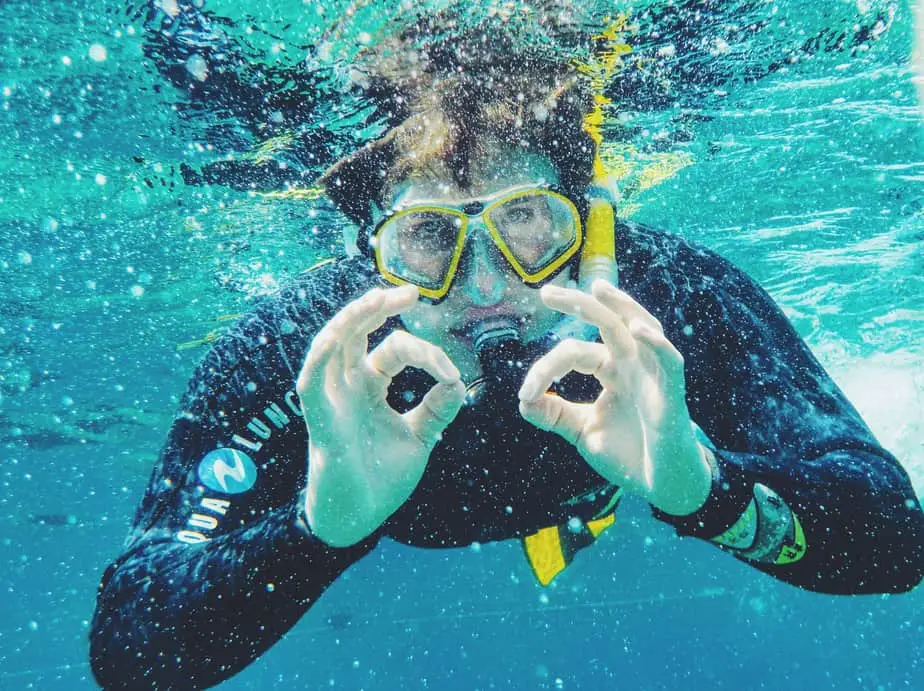You’ve arrived at your preferred tropical paradise with your mask and snorkel in hand. The skies are clear, the sun is shining bright, and the pristine waters are calm. It’s the perfect condition for snorkeling, and the urge to escape the hot weather by jumping into the refreshing sea is high. Only there’s one little problem: you aren’t sure how to breathe when snorkeling. Can you really get enough air in and out of that little tube? What happens if water gets into the tube?
Breathing through a snorkel requires you to be more deliberate than when you’re on land. Instead of rapid, shallow breaths, you must learn how to take deep and slow breaths. Doing so ensures that the maximum amount of air can enter your lungs and that the stale air is completely cleared out of the snorkel tube on exhalation.
If you find yourself feeling lightheaded, out of breath, swallowing water, or getting a sore jaw, then you need to work on your breathing technique or getting the right snorkel. In this article, we’ll discuss tips on how to control your airflow, and answer frequently asked questions regarding breathing through a snorkel.
Learn how to breathe through a snorkel
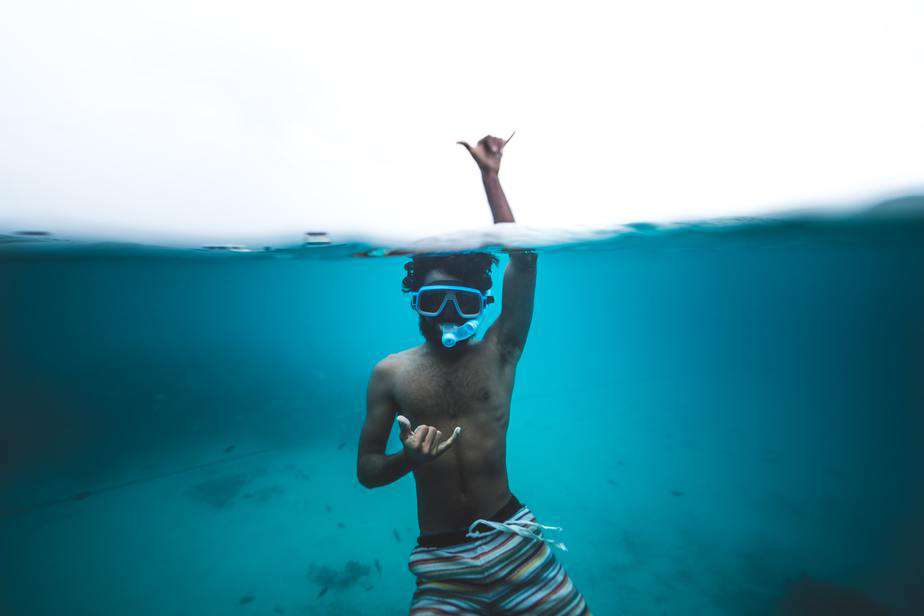
The ability to breathe underwater (albeit only by the surface) is granted to you by a simple piece of equipment: the snorkel. A snorkel isn’t the most intuitive thing to use, especially for a beginner.
First, there’s that large mouthpiece that needs to fit just right. Too big or too small, and your lips and jaw muscles will feel extremely sore and uncomfortable. Your lips need to fit around the mouthpiece such that you form a seal around it without overly stretching or puckering your lips.
Then you need to adjust from breathing through your nose to breathing through your mouth. Many snorkelers had a terrible first-time experience because they kept trying to breathe through their nose and panicking when no air entered their lungs.
Even when breathing through the snorkel, perhaps you found it hard to get the same amount of air breathing like you normally would when you’re on land? If your lung capacity isn’t enough or you don’t know the proper breathing technique, it can feel torturous to breathe through a snorkel and you may literally feel like you’re asphyxiating.
There’s also the fact that snorkels aren’t particularly long, and many first time snorkelers accidentally submerge too deep with it, allowing water to flood the snorkel tube, perhaps even leading to choking or swallowing water.
Let’s take a step back for now. If you aren’t familiar with how to breathe with a snorkel, you should first practice on land where it’s safe. You should also take a few swimming lessons if you’re a non-swimmer. Mastering any water-based activity first requires you to be familiar with deep breathing.
Once you are comfortable with breathing deeply, you’ll be able to:
- Get adequate intake of fresh air through the snorkel and clear the tube fully on exhalation.
- Decreases your chances of swallowing or choking on water.
- If you aren’t wearing a flotation device, you can control your buoyancy by adjusting how much air you leave in your lungs.
Learning how to perform any of the above represents an improvement in your breath control and mastery over the snorkel. Let’s go over how you can achieve these feats.
Practice breathing through a snorkel on land
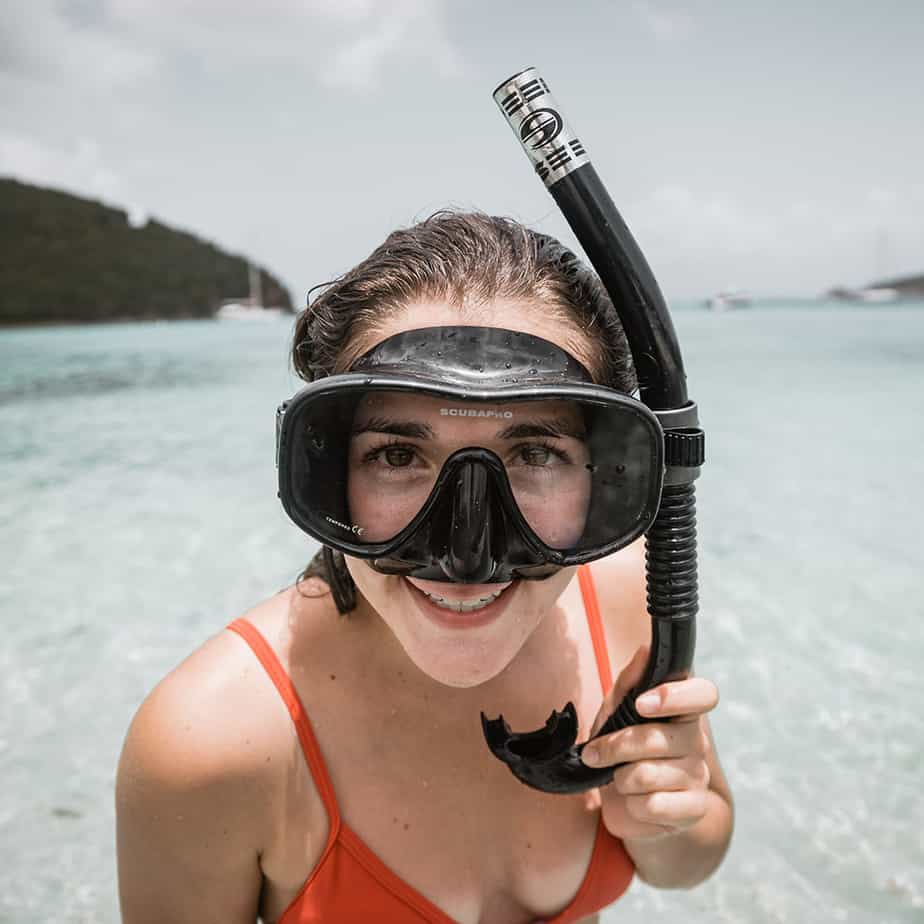
If you haven’t done so already, let’s start with the basics. Try breathing through the snorkel on dry land so you don’t have to worry about staying afloat or water entering the tube.
Here’s the golden rule: breathe deeply and slowly. Breathe in the same way you would if you were meditating or trying to calm down your heart rate. Take at least three seconds to inhale and three seconds to exhale, as a benchmark.
The first thing you’ll notice is that breathing through a snorkel is harder than usual. There is a tiny bit of resistance to your breath compared to normal breathing. It’s sort of like trying to breathe through a straw, although this straw is much larger. When you’re underwater, there is also extra pressure your lungs need to push against, adding to the resistance.
For healthy individuals with average lung capacities, this should be slightly more difficult but still doable. You’ll also find that performing deep breaths is very comforting and relaxing. So if breathing through a snorkel on land is so easy and relaxing, why do people struggle to do it in the water?
It’s mostly a matter of confidence, technique, and stamina. People who are nervous may hyperventilate (take rapid, shallow breaths) due to their anxiousness. They may panic and flail around, wasting energy and exhausting themselves. When panicking, you will need more oxygen than normal which you already aren’t getting because your breathing technique is wrong. Your stamina will run out and you might sink into the water if it isn’t shallow or you aren’t wearing a buoyancy aid.
As you can see, staying calm while snorkeling is so critical to your success. For this reason, we recommend you ease your way into the water. That’s why we recommend being comfortable with using the snorkel on land. Keep practicing how to breathe deeply. Then we can move on to the next stage.
Practice breathing through a snorkel in shallow, calm waters
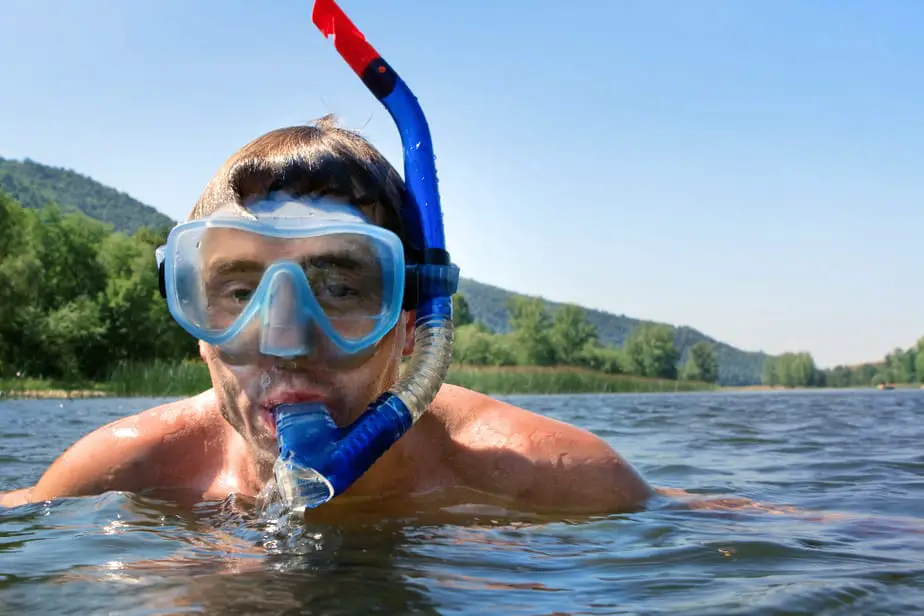
The next phase is to try breathing underwater. We recommend practicing in a shallow pool or in a protected bay. This ensures that the water stays calm and free of waves and currents. You are essentially doing the same thing, except there are now some more obstacles.
First, snorkels are known to leak water through poor-fitting mouthpieces or waves splashing into the top of the snorkel. You need to be comfortable with your airway control so that you don’t swallow every little bit of water that makes its way into your mouth.
You can minimize the amount of water that gets into the snorkel by using a semi-dry or dry snorkel. However, even these snorkels will have residual water in the tube or mouthpiece. Knowing how to breathe deeply despite this is crucial to your success. Here are some more tips to keep in mind:
- Find a nice cadence to your breathing. Perhaps you can 3 seconds inhale, 3 seconds exhale to start off.
- Whenever you breathe, be aware that there might be some water that’s going to enter your mouth.
- Never fully exhale. Keep enough air to be able to clear the snorkel.
- You can keep water from going down your throat by using your tongue as a splash guard. Have the tip of your tongue touching the roof of your mouth for protection.
- Keep your snorkel above water. If it gets submerged, be prepared for a mouthful of water.
After you’re comfortable with this, it’s time to brave deeper waters. The advice we have remains the same. You are now more likely to experience strong currents or waves, so be aware of that.
We recommend snorkelers of all experience levels to wear a flotation device. It helps you to stay afloat which is good for safety and for conserving energy.
The weather conditions can change rapidly and with little warning. The wind might pick up, causing strong waves and currents to toss you around. Heavy rain might suddenly buffet you. Without a snorkel vest, you would be ill-prepared to handle a sudden turn of the weather.
Why should I take deep breaths while snorkeling?
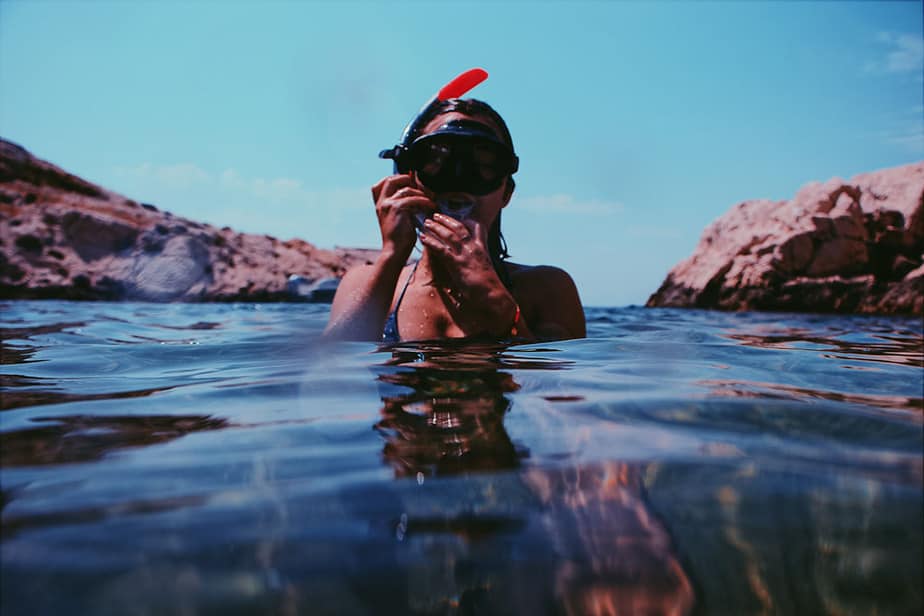
Why is slow and steady better than rapid and shallow? There are a few main reasons.
One is that rapid breaths don’t give your lungs enough time to use the oxygen in air before it is exhaled. Breathing takes energy, and rapid breaths are not energy efficient with how little oxygen is entering your body.
There’s also the issue that each breath you exhale contains a bit of carbon dioxide (CO2). With a shallow exhalation, much of the dead air remains in the snorkel tube. It hasn’t been fully cleared out. That means that, when you try to inhale again, you are breathing in some of that dead air containing CO2 and less oxygen than normal.
You are essentially going through a negative feedback loop. Your shallow breaths cause you to not get enough air and accumulate dead air in the snorkel, which only makes it harder to get more fresh air.
Taking slower, deeper breaths fixes these problems. A longer inhalation causes more fresh air to reach your lungs. A longer exhalation helps you fully clear the snorkel of dead air.
If you feel lightheaded when snorkeling, it’s a sign that you’re not breathing deeply enough. Either change up your breathing or, if it’s an emergency, remove the snorkel and breathe deeply with your head above the water.
How long can I breathe through my snorkel?
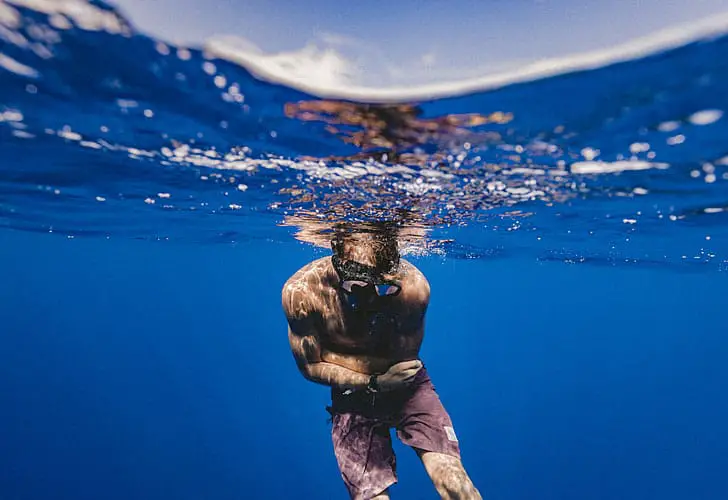
The only limitations to how long you can breath through a snorkel while underwater are physical limitations. As long as you’re able to keep getting full breaths of air and exhaling it fully, then you can go for a long time.
Realistically, factors such as getting fatigued, cold, sunburned, hungry, or the boat moving to another location will force you to limit how long you spend in the water. Also, weather conditions may suddenly change, and you should pay attention and decide when you should return before it gets worse.
Is snorkeling good for the lungs?
In general, snorkeling is a healthy activity to do. It forces you to take deep, controlled breaths, which can help you improve your lung capacity.
Additionally, you will learn airway control skills to deal with water getting in the snorkel tube. You may be able to apply your breathing techniques to other water sports like freediving or scuba diving.
Before you go out on a guided snorkeling tour, the operator will give you a medical form to ensure you’re fit to go snorkeling. If you’ve been practicing swimming and snorkel techniques in shallow waters in preparation for a snorkeling safari, then heck yes, you are fit to snorkel!
Broadly speaking, snorkeling is not too difficult, and almost anyone with a reasonable level of fitness is fit to snorkel. And if you were not the most fit person to begin with, practicing snorkeling can train your respiratory system and make you more fit than you’ve ever been.
Are full-face snorkel masks easier to breathe with?
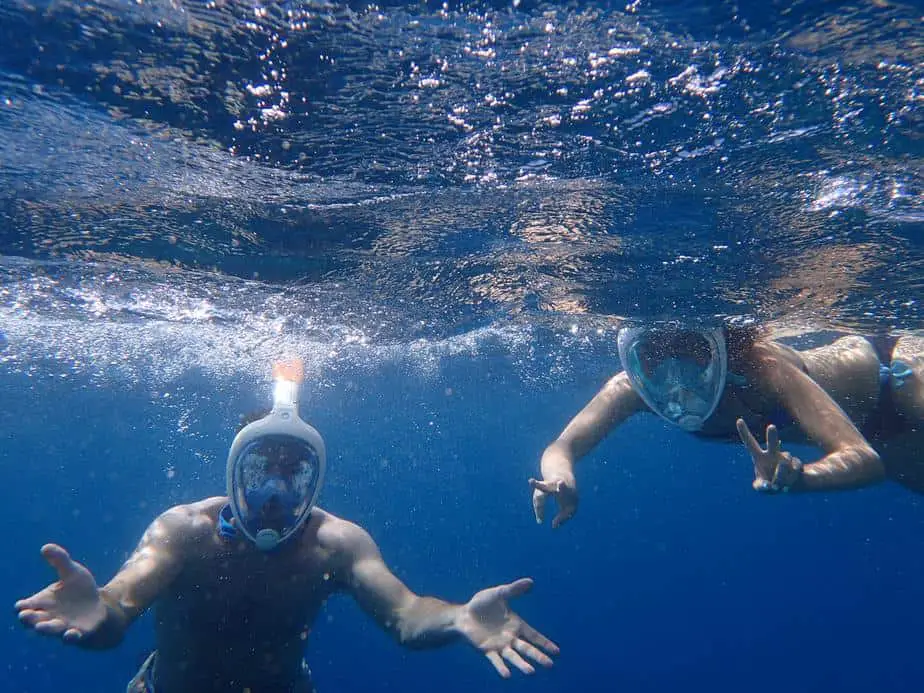
Traditionally, the mask and snorkel are two separate items that attach together. However, in recent years there has been a new innovation – a snorkel that has been fully integrated with a mask. It is known as the full face snorkel mask, and it’s the new way to breathe underwater with a snorkel.
Beginners may be attracted to the full face masks because it offers a number of advantages when it comes to breathing and comfort. The first is that, since the mask covers your entire face, you can breathe with your nose as well. Beginners who just can’t get used to breathing with their mouth may prefer this option.
Also, there is no mouthpiece required. Some people find it uncomfortable and tiring to hold the mouthpiece for so long. Well, now you don’t even need it in the first place.
Additionally, the built-in snorkel has a sophisticated design. It has both an intake and exhaust, where one opening allows only fresh air to enter, and the other to vent out the dead air. Thanks to this design, the risk of breathing in dead air is reduced, and there is less of a risk of carbon dioxide building up.
Most full face snorkel masks come with a dry snorkel built in. Dry snorkels will keep more water out than any other type of snorkel. It has a splash guard which keeps most of the water out already. When submerged, the dry snorkel’s float valve will rise to the top and literally seal the opening shut, preventing water from flooding in. When it’s no longer submerged, the float valve will naturally sink down and open the tube.
There was a debacle a few years ago where the full face snorkel mask’s safety was called into question. After extensive research, we believe that modern full face masks are incredibly safe. They are no worse than a traditional snorkel and mask, and there are even kids’ versions.
You can learn more about full face snorkel masks and which ones are the best by reading our comprehensive review.
Water temperature and breathing
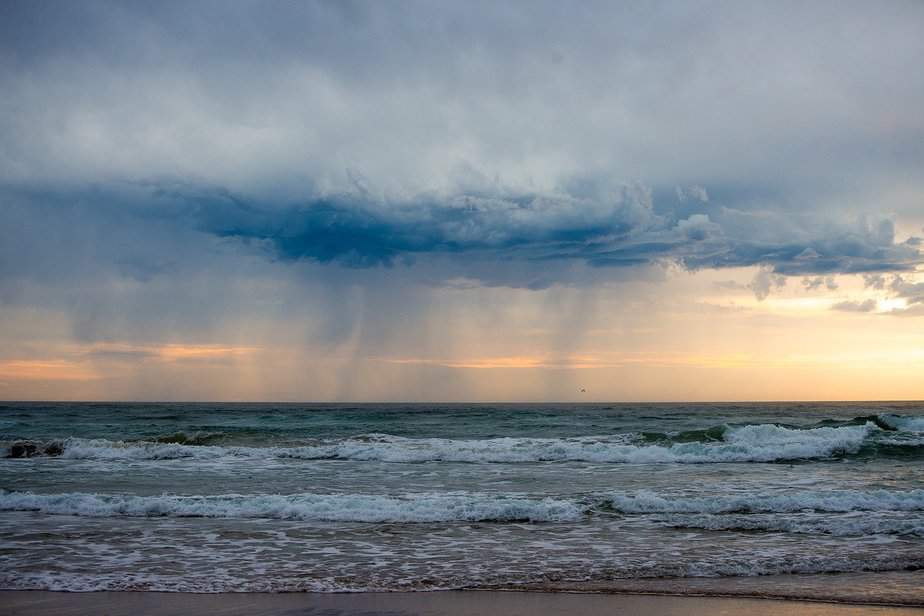
Did you know that water is 25 times more effective than wind at drawing heat away from your body? Also, if you’re wet and exposed to the wind, the cooling effect is amplified. This means that even if you’re snorkeling in warm water, you can end up shivering. It’s even possible to get hypothermia in warm water.
Most people find it harder to concentrate on their breathing when they’re cold. The constant shivering will make it harder for you to breathe in deeply and slowly.
Anything that is an impediment to controlled breathing should be avoided, so you need to prepare for this. You can wear various exposure suits such as a full wetsuit or rashguard to insulate you from the cold. Without one, you should limit your time spent in the water.
The cold can weaken your immune system and make you susceptible to a cold, sore throat, or sinus infection. If you start to feel cold, we recommend exiting the water quickly.
What to do if water comes in from the snorkel top
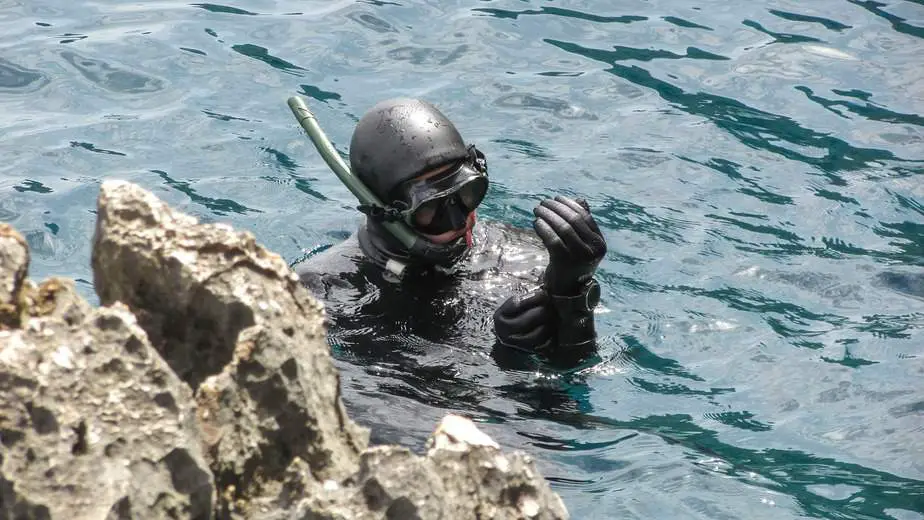
Regardless of which snorkel you have, some water will eventually enter from the opening at the top. The open top snorkel is the most likely for this to occur because of the open top. Even the semi-dry and dry snorkels aren’t foolproof with their splash guards.
By having mastery over your airway control, you can defend yourself from swallowing or choking on the water, and then clear the water out at your earliest convenience.
Once you’ve felt that water has entered the snorkel, you need to tweak your breathing so that it’s extra slow and deep. This is so that the much lighter air can still make its way through the tube, but the water still remains at the bottom of the snorkel loop. You should also have your tongue touching the roof of your mouth to act as a final line of defense against water.
Then, on your next exhale, you can forcefully blow the water out of the snorkel tube. This is known as clearing the snorkel. Don’t let your guard down, however. On your next inhale, once again, do so slowly and deeply in case there is residual water left. Blast it out again on your next exhale if necessary.
Without a doubt, this process is much easier if you’re using a semi-dry or dry snorkel. These advanced snorkels have something called a water reservoir and a purge valve at the bottom of the tube. This area collects water, making it even less likely for water to be inhaled. When you exhale, the one-way valve opens up and blasts the water out from the bottom instead of back out from the top of the tube.
For this reason, we recommend beginners to shell out a bit more cash and get a semi-dry or dry snorkel. It will save you from a lot of grief on your first few times snorkeling. Eventually, you will get so accustomed to dealing with water in your snorkel, it won’t matter which one you use.
Putting it all into practice
We’ve given a lot of information in this article so far. So how do you actually apply this in a practical snorkeling scenario? Just follow these simple tips.
Attach the snorkel properly
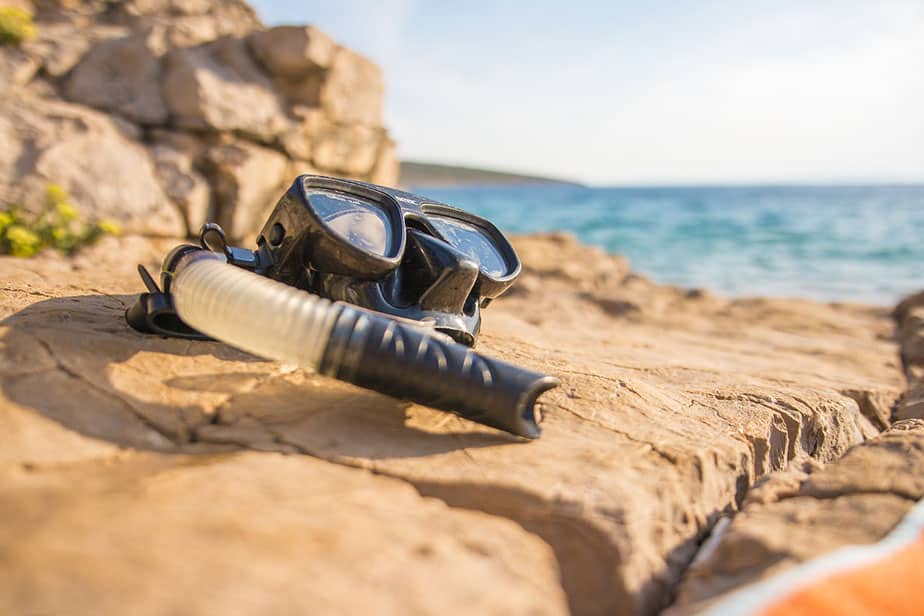
Before heading into the water, assuming you are using a separate mask and snorkel, you need to attach the snorkel properly to the mask strap using strap clips. How you attach the snorkel ensures it has proper positioning when your face is down and submerged underwater. If the positioning is off, the inlet valve will be too close to the water and increase the likelihood of water getting in.
Furthermore, a snorkel clip takes away a lot of the strain from your jaw muscles by having another point that is holding the snorkel in place. It is what’s going to keep the snorkel attached to the mask when you need to take it out of your mouth for whatever reason.
Breath deeply and slowly
Whether you’re scuba diving or snorkeling, the common wisdom is that you should breathe deeply and slowly. Breathing slowly will ensure you get maximum airflow and fill your lungs with oxygen. It will actually feel more effortless than rapid, shallow breathing.
If you don’t breathe deeply, you will feel like you’re slowly asphyxiating for a variety of reasons. There will be less air intake when inhaling, and when exhaling, dead air will linger in the snorkel if the breath is shallow. Not knowing how to breathe deeply and slowly might cause you to lose consciousness due to lack of oxygen. Don’t make this mistake. It can potentially be fatal.
To ensure you’re doing it properly, first practice on dry land. See if you ever seem to get light-headed or run out of breath. Then advance to breathing through a snorkel in a pool or bay. Then finally advance to deeper waters where there are waves and currents to contend with. At this point, your experience with the snorkel should keep you safe.
Position your head correctly
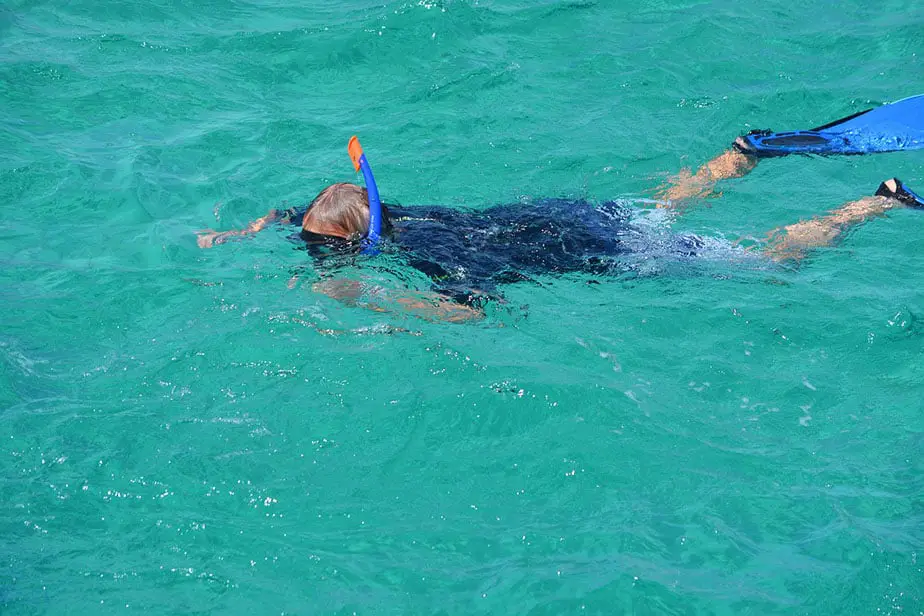
Some beginners position their head incorrectly, and this can affect how they breathe through the snorkel. Generally, you need to keep your head slightly tilted up. Beginners make the mistake of looking perpendicular to the surface when they should be looking slightly upwards.
Maintaining a slightly upward angle in regards to head positioning will ensure your snorkel is sticking straight up. Any other position can cause the snorkel to be angled, making it closer to the surface of the water and more susceptible for water to enter.
Another reference point is that the surface of the water should be just above the top of your mask. If your view is perpendicular to the surface, or you’re even tucking your chin in to look down, then that will angle the snorkel in such a way that water can get inside.
This can be hard to see if you don’t have someone checking your position. Until you figure it out, be prepared for water to enter the snorkel. Keep your tongue up, breathe slowly, and be prepared to clear the snorkel.
Practice breathing with water in your snorkel
You need to learn how to deal with water in your snorkel. You may even purposely put some fresh water into your snorkel and try it on land such as in the garden. See if you can take a slow breath without sucking up the water in the snorkel. Then clear the water out on your next exhale by forcefully blowing it out.
Next, practice flooding your snorkel. This is to simulate if you completely submerge the snorkel or if a wave splashes water in. Keep your tongue up. Even if water enters your mouth, as long as you don’t choke and have some breath in your lungs, you can clear it right back out.
As long as you’ve practiced these crucial techniques in a safe environment, you will be prepared to handle it when you’re actually in the ocean or at an advanced dive site. It also leads directly to our next point.
Don’t panic
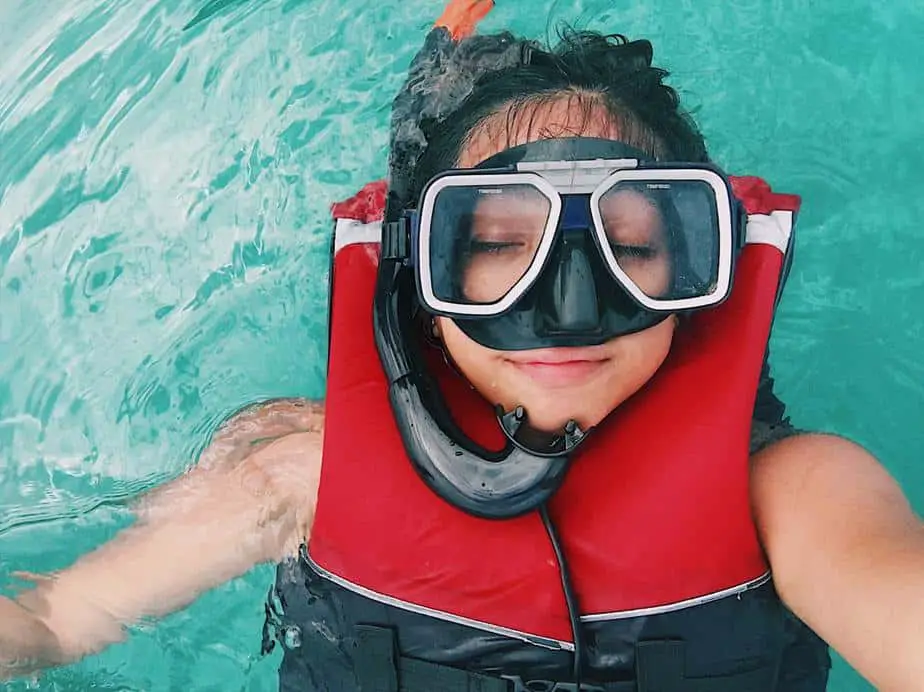
Water entering your snorkel is not the end of the world. Even if you do end up swallowing or choking on the water, you need to train yourself to remain calm.
Breathing slowly and deeply is conducive to staying calm and decreasing your heart rate. If you choke on water, panicking and flailing around will only waste even more energy and cause you to be in a worse predicament.
One of the reasons why we recommend a snorkel vest or life jacket is how easy it is to switch to an upright, vertical position. This way, you can quickly spit out the snorkel and breathe normally to facilitate a faster recovery. Your buoyancy aid will keep you afloat so you can focus on recovering.
By slowly working your way up from practicing on dry land, to practicing in a shallow pool or bay, to snorkeling by the shore, to snorkeling in deep waters, you are introducing new challenges at a rate you can handle. This way, you can improve at your own pace which should help you stay calm.
Parting words
As you can see, there is a proper way to breathe through a snorkel when snorkeling, and it’s not that challenging. If nothing else, remember this point: breathe deeply and slowly.
You may require some practice breathing through a snorkel before it becomes natural to you. The first few times may feel weird, since we are accustomed to breathing through our nose. Additionally, the increased resistance might cause you to strain your lungs starting out.
Breathing through a snorkel is more difficult for those who are out of shape. If you get winded easily, you will find yourself gasping for breath and needing to surface. A minimum level of physical fitness and swimming ability is required for smooth snorkeling, but not much. After all, there is no minimum age for snorkeling, and even kids can do it.
Keep these tips in mind, and you can quickly experience the joys of experiencing the underwater world and all the health benefits that snorkeling offers.

